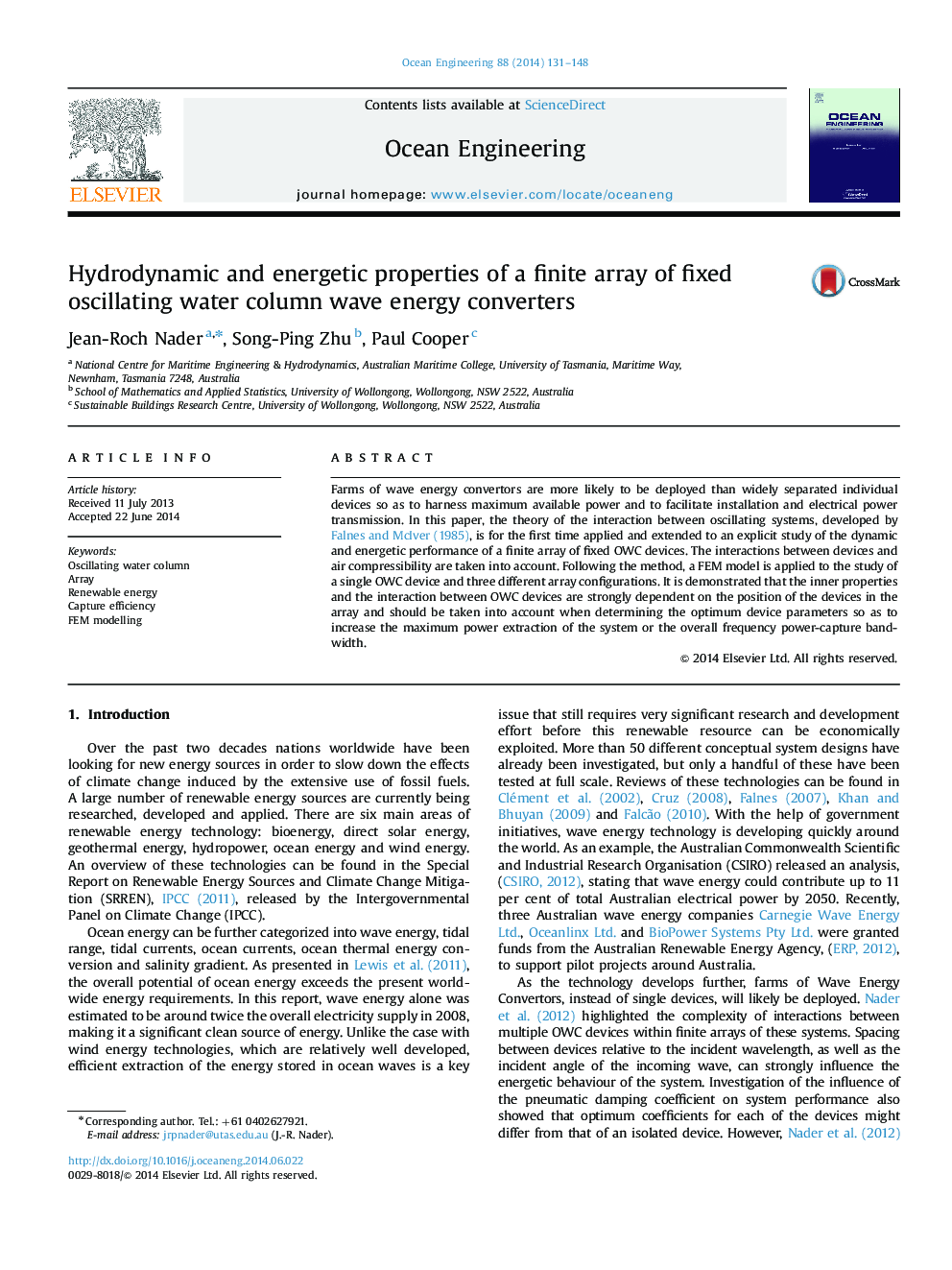| Article ID | Journal | Published Year | Pages | File Type |
|---|---|---|---|---|
| 1725609 | Ocean Engineering | 2014 | 18 Pages |
Abstract
Farms of wave energy convertors are more likely to be deployed than widely separated individual devices so as to harness maximum available power and to facilitate installation and electrical power transmission. In this paper, the theory of the interaction between oscillating systems, developed by Falnes and McIver (1985), is for the first time applied and extended to an explicit study of the dynamic and energetic performance of a finite array of fixed OWC devices. The interactions between devices and air compressibility are taken into account. Following the method, a FEM model is applied to the study of a single OWC device and three different array configurations. It is demonstrated that the inner properties and the interaction between OWC devices are strongly dependent on the position of the devices in the array and should be taken into account when determining the optimum device parameters so as to increase the maximum power extraction of the system or the overall frequency power-capture band-width.
Related Topics
Physical Sciences and Engineering
Engineering
Ocean Engineering
Authors
Jean-Roch Nader, Song-Ping Zhu, Paul Cooper,
